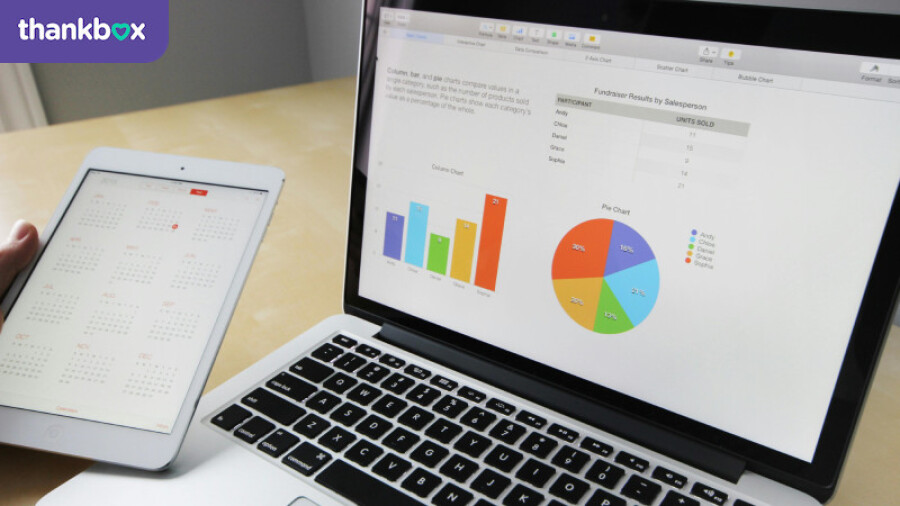Staying On Track: 10 Key HR Metrics We Recommend Tracking


A major function of HR is to act as an organisation’s eyes and ears, constantly learning how you can improve the workplace for the benefit of your company and all its employees. But, you’ll need tools to do this—enter HR metrics!
Think about it like this—without tracking your HR metrics, you won’t be able to identify how your HR processes and initiatives actually impact your desired outcomes. These insights are essential tools for predicting, planning and optimising your workforce for the future.
So, join us at Thankbox as we share 10 beneficial HR metrics you can track to define a solid pathway for achieving your goals.
Let’s get started!
What are HR metrics?
Let’s start with a clear definition.
HR metrics are the quantitative measures you use to track and assess the performance and effectiveness of various HR activities and initiatives within your organisation.
These metrics include a wide range of HR activities, including:
Recruitment (e.g., time to hire, cost per hire)
Training and development (e.g., training hours per employee, training costs per employee)
Retention (e.g., turnover rate, employee engagement scores)
Compensation and benefits (e.g., average salary, total rewards package value)
These metrics provide valuable insights into your workforce and can help you identify areas for improvement, track progress towards goals, and make data-driven decisions.
BUSINESS_CTA
Why are HR metrics important?
HR metrics are important—but don’t just take our word for it. According to McKinsey, companies that effectively measure and use people analytics often experience a 25% increase in productivity.
But that’s not all, keeping track of your HR metrics is essential for several other reasons:
Improves decision-making: Enables data-driven decisions, helping you optimise your HR strategies and processes. For example, by leveraging data on the impact of employee wellness programs on absence rates, you can make informed decisions about continuing, modifying, or expanding your programs to boost their effectiveness.
Enhances your recruitment efficiency: Identifies successful, and unsuccessful, sourcing channels and methods to direct you to better hiring practices.
Boosts employee engagement: Helps you understand your employee satisfaction and engagement levels, so you can fix your initiatives or enhance your people management.
Increases retention rates: Identifies trends and issues affecting employee turnover, allowing for proactive retention strategies.
Improves ROI: Helps you improve your return on investment regarding HR programs like engagement, wellness, financial planning and performance.
Measures training effectiveness: Evaluates the impact of training programs on employee performance and development.

10 important HR metrics to track
Let’s dive into the metrics that will offer a comprehensive view of your company’s human resource strength, and help you uncover your areas for improvement:
1. Time to hire
This is one of the most important HR metrics. Time to hire tracks the time it takes to fill an open position—from the moment a job opening is posted to the moment a candidate accepts an offer. A lengthy time to hire can indicate inefficiencies in your recruitment process.
2. Quality of hire (QoH)
Quality of hire is quite a bit more complicated than time to hire. It’s an HR metric that’s designed to track the quality of new hires—usually over the course of a quarter or year.
But isn’t “quality” subjective? Yes, that’s why there isn’t a single, correct way to calculate the quality of hire. Instead, there’s a general formula that you can adapt to the specific needs and goals of your organization.
It is:

An indicator is basically a trait or characteristic you’re looking for in a hire. For example, indicators for sales hires might be “number of deals closed” and “total revenue generated”. You can also quantify things like “company culture assimilation” and “employee satisfaction” and include those.

3. Turnover rate
This essential metric measures the percentage of employees leaving your company over a certain period. It helps in understanding employee retention and job satisfaction.
You can combine this metric with a performance metric to give you deeper insight into the difference in departures of high and low performers. For example, if you notice a high turnover rate among your top salespeople, it may indicate a problem with top-level compensation or work-life balance.
4. Employee retention rate
Employee retention rate is one of the most important metrics for measuring the success of your company's talent management efforts. It measures how many employees have stayed with your company over a certain period, and can give you a sense of employee satisfaction and engagement.
A low retention rate may indicate issues such as poor work culture, lack of career growth opportunities, or inadequate compensation. On the other hand, a high retention rate indicates that your employees are happy and loyal to the company.
5. Employee engagement score
Often assessed through surveys, your employee engagement scores gauge the level of employee satisfaction and engagement at work. This metric is also pretty useful for tracking changes in engagement or satisfaction scores after implementing a new strategy to boost staff morale.

If your employee engagement is lacking, you can consider trying some of our employee engagement activity suggestions or facilitating peer-to-peer recognition with Thankbox!
6. Recognition rate
Your recognition rate is a unique metric which measures the frequency and distribution of employee recognition across your organisation. This can be a surprisingly important metric to track—recognition is essential for boosting motivation and employee empowerment.

At Thankbox, we emphasise the importance of recognising your employees’ contributions. With our engaging platform, you can collectively send fun and personalised thank you messages as well as digital gift cards to make your employees feel appreciated and respected.
7. Absence rate
This metric measures the frequency of unscheduled absences, providing insight into employee well-being and operational efficiency. Tracking your absenteeism rate is also great for predicting turnover and indicating if your workplace promotes a healthy work-life balance.
8. Employee productivity rate
A sure method to track your workplace efficiency is by measuring your employee productivity rate. It compares the output of employees against their inputs (like hours worked), indicating their efficiency.
This metric is also effective in uncovering which of your employees may need extra support, in the form of training, as well as who may be your top performers.
9. DEI metrics
Diversity, equity, and inclusion (DEI) metrics track the representation of different demographic groups within your company to make sure you meet your specific diversity and inclusion goals. You can measure this metric using anonymous surveys that ask respectful, non-intrusive questions about:
Race
Ethnicity
Gender identity
Age
It’s also important to follow these kinds of questions up with open-ended questions about how your employees experience your company culture. Hitting a certain percentage of diversity within your company shouldn’t be the only goal—you need to make sure your employees feel valued and included as well.
BUSINESS_CTA
10. Training effectiveness
This metric evaluates the impact of training on employee performance and productivity, often through pre- and post-training assessments.
Another great metric for this category is the training participation rate. It helps show the percentage of your employees participating in career development opportunities. This can be a useful tool to determine if your company is offering the right types of training opportunities to your employees.

Wrapping up
And there we have it–our top ten suggestions of HR metrics to track. For the best outcomes, you should be using your HR analytics to help you make more informed decisions, improve your HR strategies, and enhance your workforce management and productivity.
But don’t get so caught up in the numbers that you overlook the human element of human resources. Showing your employees that you value their well-being and development is just as important as tracking these metrics.
So, why not create a Thankbox today and pave the way for a happier workplace?
Images: Cover | Diverse women in a business meeting | Statistics and a resume | Cheerful team | Women having a meeting in an office





